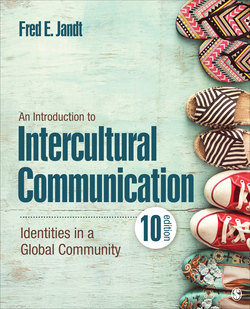Читать книгу An Introduction to Intercultural Communication - Fred E. Jandt - Страница 126
На сайте Литреса книга снята с продажи.
Historical Context
ОглавлениеToday’s China represents 4,000 years of civilization. Its history was first recorded more than 1,500 years before the beginning of Christianity. For about half its history, China had multiple governments—at times both a southern and a northern regime. Until early in the 20th century, China was ruled by a series of dynasties and, through the centuries, was largely indifferent to the outside world in that from the Chinese perspective it dominated the world.
Map 3.2 China
China-U.S. contact began in the early 20th century. With the help of Chinese communities in Hawai‘i, Japan, the United States, and Europe, Dr. Sun Yat-sen led a nationalist movement. Frustrated with a lack of support from Western countries, Dr. Sun turned to Russian Communists for support.
Chiang Kai-shek attempted to reunify the country. Chiang gained U.S. support partly due to the publicity Henry Luce provided through his Time magazine, the popularity of Pearl S. Buck’s novels, and the images of Chiang as a convert to Methodism and of his Wellesley College–educated wife. Chiang reversed Dr. Sun’s policy of working with the Communists. Meanwhile, Mao Zedong had been developing peasant revolts against landlords, establishing peasant-based soviets (Communist local governments). Mao took refuge in remote villages with thousands of Communist refugees and moved to organize the peasantry into a force to take power. In the ensuing warfare, the U.S.-backed Nationalists (Chiang) were no match for the Communists (Mao). In 1949, Chiang fled with his followers to the island of Taiwan, located about 161 kilometers (100 miles) off the coast of China. Only 15% of the island’s population were 1949 immigrants, but they dominated Taiwan’s government through martial law. The nationalist government of Taiwan (the Republic of China) considered itself the legal government of all China, whereas the mainland Chinese government claimed Taiwan as part of its territory. In 1955, the United States agreed to protect Taiwan in case of attack from mainland China.
For more than four decades, Mao was the dominant figure in Chinese life. In the 1950s, the country benefited from land redistribution, introduction of compulsory universal education, adoption of simplified Chinese characters that led to greater literacy, and the introduction of health and welfare reforms. In 1958, Mao launched the Great Leap Forward. This program forced farmers into communes, abolished private property, and set up backyard steel mills to speed China’s entry into the industrial age. The program was a catastrophic failure and brought widespread starvation and the country to bankruptcy.
In 1971, the People’s Republic of China (mainland China) was admitted to the United Nations in Taiwan’s place despite U.S. objections. In that year, the U.S. national table tennis team was invited to China. They were among the first from the United States to visit the country since 1949. Later that year, President Richard Nixon hosted the Chinese national team in the White House. What became known as “ping-pong diplomacy” led to a breakthrough in U.S.-China relations in 1972, when President Nixon and his national security adviser, Henry Kissinger, established relations with the Chinese government.
In 1976, Mao died. Shortly after, the Communist Party officially declared Mao’s concept of continuing class struggle an ideological mistake. Post-Mao China was dominated by the leadership of Deng Xiaoping. Deng replaced Marx and Lenin with a commodity economy and profit incentives. Later, in a highly significant move under President Jimmy Carter, on January 1, 1979, the United States normalized relations with the People’s Republic of China and severed diplomatic relations with Taiwan, together with terminating the defense agreement protecting the island.
Beginning with Marco Polo’s sojourn in China in the late 13th century, there have been two “Chinas”—China as imaged by Westerners and the real China. Ironically, at times the China as imaged by Westerners was similar to Western countries in some ways rather than the real China. That today’s China’s relations with the United States continue to be strained can be partially explained by each country’s high or low communication style.
